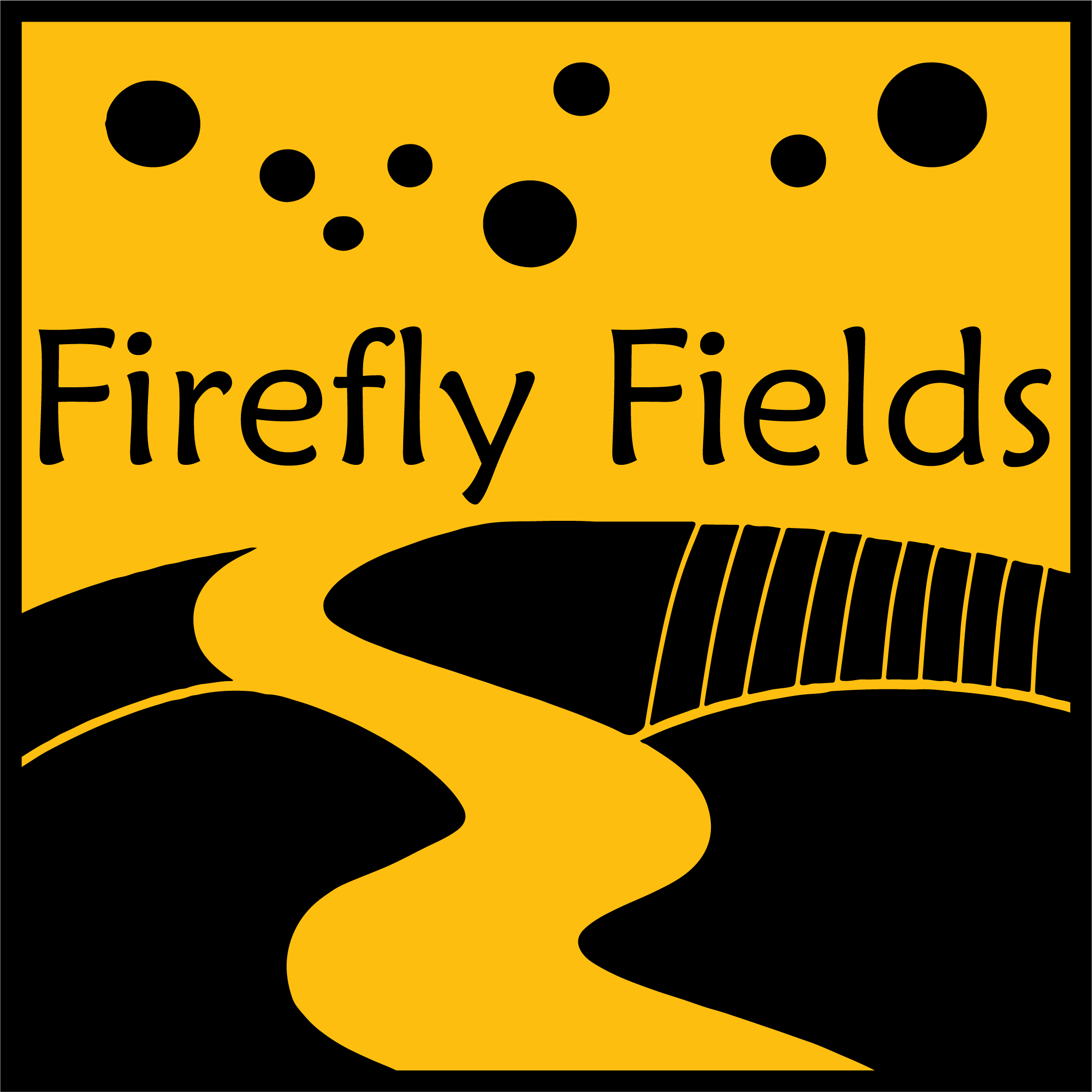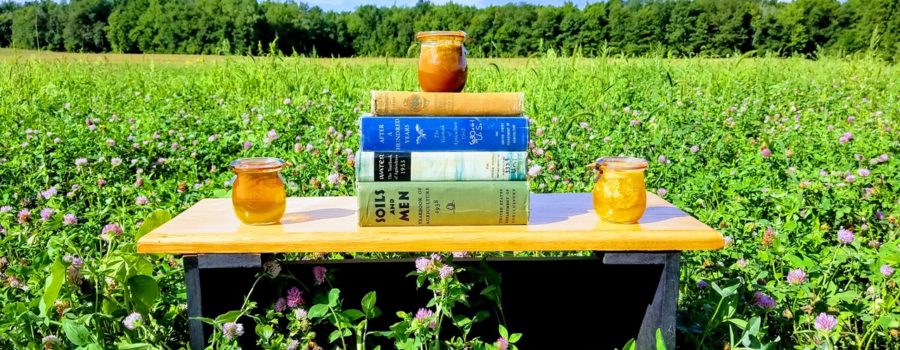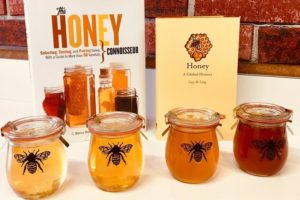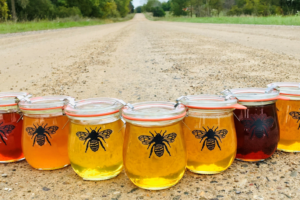Clover honey is ‘as American as apple pie,’ and strangely enough ‘apple pie’ is just one of its characteristic notes! Thank you, Universe. Of all the honeys in the U.S., clover is probably the most popular and well-known, and truly sets the standard for excellence. You can find it labeled on almost every grocery shelf and at most farmers’ markets. While there are more than 200 species of clover, fewer than 10 contribute to honey production. I have an old bee book, published in 1920 by Frank Chapman Pellett titled American Honey Plants, Together With Those Which Are of Special Value to the Beekeepers as Sources of Pollen. Besides writing a great descriptive title, Mr. Pellett surveyed across the entire U.S. between 1900-1920 the plants that are helpful for bees. From his epic adventure he writes, ‘The clovers by far are the most important American honey plants….The quality of the clover honey is the best and in the quantity of yield it ranks high, under favorable conditions.’

One hundred years ago, clover (i.e. white, alsike, red, crimson, and yellow) could be found in nearly every part of America. It was once a major source of hay for cattle brought over by European immigrants. It’s estimated that sweet clover was brought to the U.S. as early as 1664 as a forage crop. Since then it has spread throughout the U.S. and to all but 2 Canadian Provinces. However, modern farming methods have replaced much of the sweeping clover pastures with corn and soybeans. Still, many regenerative, organic farms like Firefly Fields use clover abundantly as a cover crop and forage for cattle, bees, and soil. On our farm, bees primarily forage on red, crimson, and alsike clovers.




While I’m confident to say most honeys are polyfloral, meaning that they are made up of more than one type of blossom, honey that is mainly derived from clover’s floral resources has some very consistent sensory characteristics. So, even though honeys may be mixed in floral nectars, if honey flows are pulled at the right time you can isolate a honey that has a dominant monofloral type and flavor profile. Additionally, bees are persistent foragers and under the right conditions scout bees will lead forager bees repeatedly to an abundant clover pasture to forage for multiple weeks as long as the nectar and pollen is good.
So without further ado, here’s a deeper look at clover honey’s profile from our farm.
Firefly’s Clover Honey Sensory Profile
COLOR: On the Pfund Honey Color Grading System, the clover honey from our farm is between ‘extra white’ and ‘white’ in color. A photometer, known as a Honey Color Analyzer, measures the wavelengths of light that can pass through the honey expressed in millimeters (mm). Our clover honey’s color intensity is between 12 – 24 mm. This translates to a light golden to extra light amber color. Clover honeys collected from white and yellow sweet clovers in the more western region of the U.S. tend to be even lighter in color than the light golden to light ambers you find on our farm and regions heading toward the east coast.

AROMA: Mild aroma, low intensity, very delicate. Scents of jam and stone fruit, a little herbaceous, and maybe a floral note.
FLAVOR: Clover honey’s sweet, delicate vegetal and fruity aroma, opens up to an apple, jammy start that ends with a cinnamon spice finish. This is where the signature ‘apple pie’ note comes in. Yet, it’s much more complex than that. The sweetness is like a subtle marshmallow mellowed out with an herbaceous grassy earthiness. If you’ve ever been in a hay field or near cut grass, you know what this smells like and there’s a nice grounding feel left in your mouth. It’s a feeling you get coupled with a sweet jam – I tasted a little of my mother’s strawberry jam, but those who haven’t had her jam 🙂 think more along the lines of pulpy dates finishing with just a smidge of salt. Overall, the flavor tends to be more sweet, less sour, with even less bitter in the feel. It is a mild honey, so one must pay attention to feel all the notes.
TEXTURE: Unheated clover honeys crystallize rapidly (usually within 3-6 months from our farm), and our honey is 100% raw – so no heating! When still in liquid state it’s texture is mildly thick and super smooth, but the fine-textured crystals that form are a welcomed sensory experience. The buttery smoothness maintains on the tongue whether in liquid or crystal form, and the fine crystals tend to offer a new feeling and finish to the honey leaving the taster with a cooling effect on the tongue.
HEDONIC RATING (Do I love it or not?): It’s up there with some of my favorite honeys! I especially love our early season clover honey. It doesn’t happen every year, but occasionally our clover will begin bloom at the end of the basswood tree flow. The basswood will add a little citrusy, lime note to the honey that is to die for! (In case you are wondering, French Lavender Honey is my FAV! The REAL STUFF from a lavender field, not the ‘infused with’ lavender honey!)

Food Pairing Ideas
Clover honey is widely used as a table honey to sweeten tea, coffee, baked goods, salad dressings, custards, and sauces. To step it up a notch, add it to a meat and cheese board pairing it with a salty Italian Pecorino or creamy English Lancashire cheese with crostini and a glass of Riesling. Truly, you cannot go wrong with this versatile, go-to honey. For a fresh afternoon energy boost, add a touch of clover honey to some freshly sliced apples and sprinkle with some Parmesan. Toss it into a honey mustard dressing to throw over a spinach salad with some nice walnuts and pears. Drizzle it over a cardamom-spiced rice pudding or butter pecan ice cream!
Would love to hear your ideas and uses of clover honey! Please leave them in the comments. Thank you for reading.







Leave a Reply
Your email is safe with us.